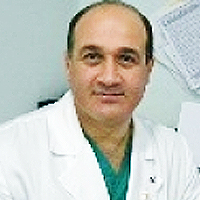Efficacies of 11% Lactoferricin and 0.05% Chlorhexidine Otological Solution compared, in the treatment of microbial otic overgrowth: A randomized single blinded study
Published on: 4th October, 2017
OCLC Number/Unique Identifier: 7325011971
Background:Topical therapy with antimicrobial agents is used in otitis treatment. Due to increase of antibiotic resistance, new strategies are needed. Antiseptics are used but they may induce contact dermatitis. Natural antimicrobial peptides may represent future effective drugs.
Objectives:The objectives were to test the efficacy of an 11% lactoferricin otological solution (LCF) in bacterial and yeasts otic overgrowth and compare LCF with a commercial one containing chlorhexidine (CLX) 0.05%.
Materials and methods:Forty-one dogs diagnosed with bacterial or yeasts otitis overgrowths were included according to general good practice. They were randomly assigned to lactoferricin or chlorhexidine group for treatment. Otological solution were applied twice a day for a week and then daily for another week. Clinical and cytological score was assessed at day 1 and day 14. At the end of the study, the owners had to express an opinion on the overall efficacy of the products. Statistical analyses were performed using Wilkoxon’s test and T test for paired samples. Results in lesional and cytological score were significative with a p<0.05.
Results:Forty dogs completed the study. All cases, receiving lactoferricin or chlorhexidine, were successfully treated with clinical signs remission and regression of infection (p<0.05). The owners’ judgment was good in 87%, mild in 13% for LCF group. For CLX they scored good in 41%, mild in 24% and unuseful in 35% of cases.
Conclusions:Lactoferricin, an antimicrobial natural peptide, showed the same efficacy of chlorhexidine in the treatment of otitis characterized by bacterial or/and yeast overgrowth.
Comparing Immunity Elicited by Feedback and Titered Viral Inoculation against PEDV in Swine
Published on: 13th November, 2024
Porcine Epidemic Diarrhea Virus (PEDV) can infect pigs of any age, but the disease severity varies significantly, particularly affecting neonatal piglets due to their immature immune system. Various vaccination strategies have been questioned for their efficacy, especially since outbreaks have occurred even on vaccinated farms. Recent suggestions indicate that exposure to the virus may enhance the effectiveness of inactivated vaccines, highlighting the potential benefits of using attenuated viruses to generate immunity in sows without prior exposure. This study aimed to evaluate the humoral and cytokine responses in pregnant sows and their piglets after inoculation of affected piglet intestinal contents and a virus isolated. We measured immune parameters such as IL-12, IL-22, IgG, and IgA, as well as neutralizing antibodies in serum, colostrum, and milk. Notably, higher titers of neutralizing antibodies were found in sows immunized with the viral inoculum, while IL-12 and IL-22 levels showed no significant differences. Additionally, we assessed productive parameters like total piglets born, weaning mortality, average birth weight, and stillborn rates. The results indicated that sows treated with affected piglet intestinal contents had higher mortality (48.31%) and stillborn rates (20.96%) compared to those receiving the isolated virus (30.02% and 10.44%, respectively). These findings suggest that using an isolated virus can offer a safe, long-lasting, and specific immune response, underscoring the importance of thorough analysis of both systemic and mucosal immune responses against PEDV.
The failure to provide an effective veterinary service to sheep in Australia
Published on: 3rd September, 2018
OCLC Number/Unique Identifier: 7856136930
Sheep are not native to Australia and were originally imported; 44 sheep were among the animals transported from Great Britain to the penal colony established on the east coast of Terra Australis in January 1788 http://firstfleetfelowshp.org.au.
The following brief account of the history of wool in Australia is taken from “The Australian Merino” which began;
The Australian Merino…comprised one of the greatest creative expressions of domestic animal species by and for mankind…one of the greatest contributions to the world economy [1].
These original sheep were for human provisions and consisted of fat-tailed native sheep from the Cape of Good Hope, but the primary source of sheep for the first three or four decades of Australia’s history were from Bengal, the closest British colony to Australia.
Zoonotic potential of Giardia lamblia and control of giardiasis
Published on: 7th February, 2019
OCLC Number/Unique Identifier: 8005444774
Giardia is the most common pathogenic intestinal flagellate protozoan in the world. The most studied species is Giardia lamblia (syn. Giardia intestinalis, Giardia duodenalis) that infects mammals, including humans. About the other seven species the scientific literature is very scarce and little is known about its characteristics and epidemiological importance. The exception is Giardia muris species that is frequently used in experimental infection to attempt to understand the parasite-host interaction in G. lamblia infection [1].
Clinical Performance of the Erba H7100 Hematology Analyzer: Focus on Reticulocytes
Published on: 18th September, 2025
This study comparatively evaluated the analytical performance of the Erba H7100 hematology analyzer against the Siemens Advia 2120i and Beckman Coulter DXH 900, using 243 patient samples. The study assessed the agreement and linear relationship across 14 key hematological parameters in whole blood, employing statistical methods that included mean bias, standard deviation of the difference, Pearson’s correlation, and coefficient of determination. Additionally, reticulocyte counts were analyzed in 27 samples for Erba H7100 vs. Advia 2120i and 53 samples for Erba H7100 vs. DXH 900, revealing exceptional agreement with high Pearson’s r and r-squared values. The performance of the Erba H7100 and DXH 900 in analyzing ascitic, cerebrospinal, and bronchial wash fluids was also evaluated. Notably, the Advia 2120i analyzer exhibited discrepancies in mean corpuscular volume (MCV) and monocyte counts (Mon#). Conversely, the Erba H7100 showed better agreement with the DXH 900 for MCV and Mon# in whole blood. In fluid samples, Erba H7100 and DXH 900 demonstrated a strong correlation with Microscopy in determining Neutrophil % and Lymphocyte % values. Strong linear correlations were observed for most parameters in whole blood, with reticulocyte counts showing near-perfect correlation. This study underscores the importance of rigorous validation and potential platform-specific reference intervals to ensure accurate and reliable hematological testing, emphasizing the need for standardized methodologies in clinical laboratories.
Development and quality evaluation of Jam from Watermelon (Citrullus Lanatus) and Pawpaw (Carica Papaya) juice
Published on: 28th November, 2017
OCLC Number/Unique Identifier: 7286356937
The seasonal nature of most fruits available in the market coupled with inadequate storage and processing facilities has limited their consumption by majority of the people in the country. Jams made from fruits are good bread spread rather than any other food products because they serve as adequate balance diet and it contains antioxidant such as vitamin C and A which play an important role in preventing cancer, cardiovascular problem and improvement of eyesight. Pawpaw and watermelon fruits have been reported to be nutritive and high in antioxidant properties that can scavenge free radicals, thereby improving the antioxidant status of the body. It is therefore deemed fit to produce jam from these perishable commodities in other to make them available all through the year and as well as adding to varieties of food products. The aqueous extracts of watermelon with pawpaw juice were processed into jam and the physicochemical properties of the jam samples were analysed. The resulting jam samples showed moisture content ranging between 30.60-35.30%, protein 0.40-0.80%, fat 0.20-0.40%, ash 1.20-1.70%, crude fibre 0.10-0.30%, carbohydrate 62.10-67.16%, β-carotene 610-1350µg/100g and ascorbic acid 9.60-15.40mg/100g. The jam samples were found to be very nutritive and high in antimicrobial and antioxidant properties that can scavenge free radicals, thereby can improve the antioxidant status of the body. Sensory evaluation tests showed that the samples were acceptable and compared favourably with the commercial imported brand while sample AA had the highest preference in all the sensory attributes evaluated by the panellists. Microbiological examination also showed that the jam samples had total plate count ranging from 4.10x101 to 2.00 x101 cfu/g, yeast and mould count ranged from 2.10x101 to 1.00 x101cfu/g with no observable coliform count.
Effects of Balanites Aegyptiaca (del) Seed Cake on Growth and Carcass Performance of Growing Rabbit
Published on: 10th October, 2018
OCLC Number/Unique Identifier: 7906081729
A study on growth and carcass performance was conducted to evaluate the effect of Balanites aegyptiaca seed cake meal (BASCM) as a substitute for groundnut cake in the diet of growing rabbit. Five experimental diets were formulated representing the following treatments: T1, T2, T3, T4 and T5 respectively. T1 (0% BASCM) was served as the control diet, while T2, T3, T4 and T5 contained 25%, 50% 75% and 100% BASCM respectively. A total of 100 weaner rabbits of mixed breeds were purchased from the National Animal Production Research Institute (NAPRI), Zaria, Nigeria. The rabbits were fed the control diet during the one week of adjustment period. They were given vitalyte as anti-stress and were dewormed using ivermectin, at the end of one week of adjustment; the rabbits were housed in different hutches and fed their respective experimental diet for one month. Each treatment contained 20 rabbits and these treatments’ (T1-T5) each were replicated in four portions and each portion had five rabbits each. Results showed that all the parameters were significantly different (P<0.05) among the treatment groups. Balanites aegyptiaca seed cake meal can replace groundnut cake at 25% level inclusion without adverse effect on the rabbit physiology.
Recent findings related to Nutrition and Diabetes Mellitus
Published on: 18th December, 2018
OCLC Number/Unique Identifier: 7964755229
Roux-en-Y Gastric Bypass surgery is superior to medical treatment for short- to medium-term remission of Type 2 diabetes (T2DM) [1]. Recent research indicates that the improvements in insulin sensitivity following bariatric surgery are associated with elevated circulating bile acid concentration and remodeling of gut microbiota [2]. Gut microbiome can be considered as a target of dietary interventions or medicines to prevention/treatment of hyperglycemia in T2DM. Since, the glucose-lowering effects of metformin are mediated by changes in the composition and function of gut microbiota [3,4].
Incidence and disease control of Zucchini yellow mosaic potyvirus
Published on: 5th May, 2020
OCLC Number/Unique Identifier: 8874829502
Zucchini yellow mosaic potyvirus (ZYMV) was first identified in northern Italy. It likes other species of the family Potyuiridue. ZYMV has been recorded in many countries since 1981. The efficient intercontinental spread of the virus can be explained by international trading of infected seeds. Since coat protein (CP) analysis has become a primary method for taxonomic assignment of potyviruses the aims were to characterize this genomic region of ZYMV originating from virus-infected cucurbitaceous seedlings. Virus infection in cucurbits is typically associated with mosaic symptoms on leaves and lumpy, distorted fruit. The range of symptoms produced by each virus can overlap and plants are commonly infected by more than one virus at once. The viruses are spread by many species of aphids moving through or within a crop. Control options include: destroying old cucurbit crops as soon as harvesting is completed destroying weeds and volunteer cucurbits, within and around crops as these harbor the viruses and/or the aphids separating new crops from maturing crops as these will have high levels of virus infection avoiding overlapping crops of cucurbits.
Gene polymorphisms CVPDr on some plants citrus in Bali Island
Published on: 7th May, 2020
OCLC Number/Unique Identifier: 8604563550
Citrus Vein Phloem Degeneration (CVPD) is the main disease of citrus plants in Indonesia. This disease is caused by Gram negative bacteria, Candidatus Liberibacter asiaticus. Almost all citrus plants are susceptible to this disease and only a few citrus plants such as seedless lime (Citrus aurantiifolia var. Seedles) and kinkit citrus (Triphacia trifoliate) are tolerant. Both of these citrus plants store DNA fragments of CVPDr which are considered as tolerant factors (841 bp). However, this study found that CVPDr DNA fragments were also found in citrus plants susceptible to CVPD disease. This research aims to study DNA polymorphisms from CVPDr DNA fragments in citrus plants on the island of Bali. The PCR test showed T. trifoliate and C. aurantifolia that are resistant to CVPD and Pylogenically are in the same group as C. nobilis var Buleleng, C. reticulate var. Slayer Buleleng, and C. amblicarpa. On the other hand, citrus plants susceptible to CVPD are in a different group. There are two types of citrus plants not containing CVPDr DNA fragments, namely C. nobilis var. Petang and M. paniculata L. These results indicate that the CVPDr DNA fragment polymorphism is a factor tolerant to CVPD disease.




